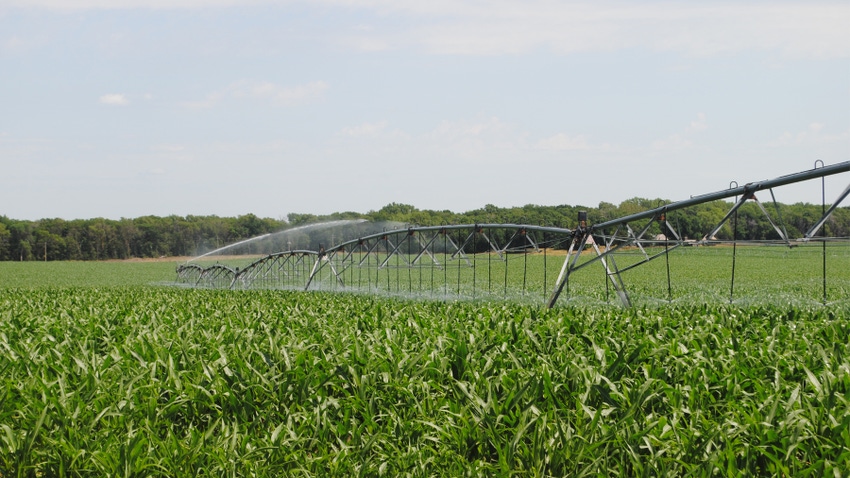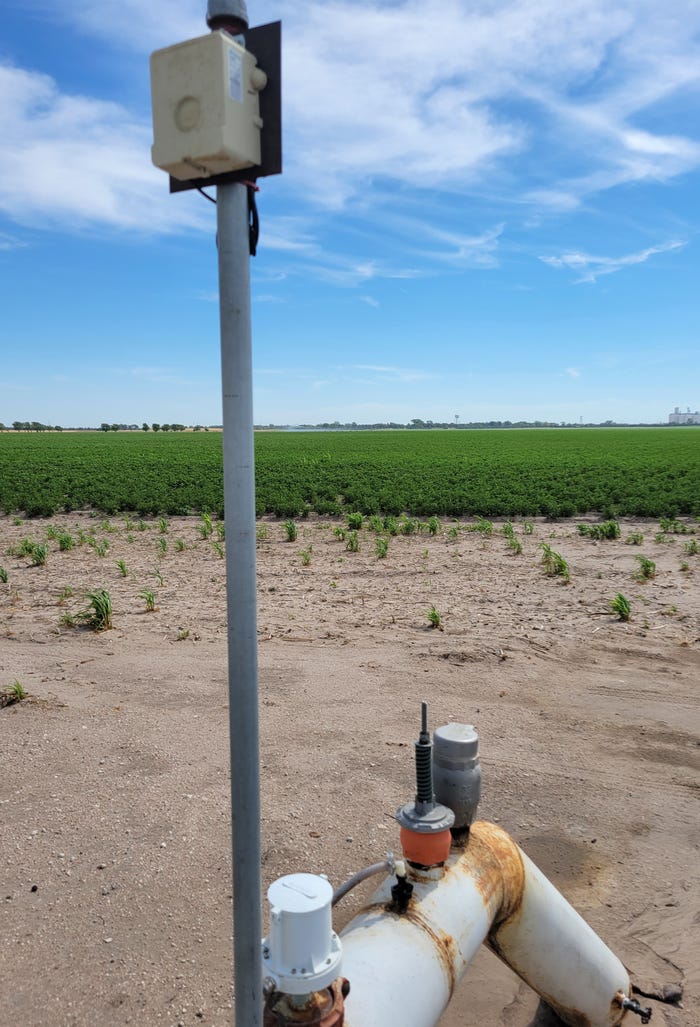
Water is on the top of every producer’s mind this year, especially among irrigators.
One way that Nebraska works to better conserve water is through the work of Natural Resources Districts. The beauty of the unique Nebraska NRD system is that each district can tailor programs based on its distinct watershed.
A step that some of the NRDs have taken is updating traditional flowmeters to automated ones and tracking evapotranspiration (ET). These new smart meters send crucial alerts to producers, allowing for a quicker response time and conserving water.
Upper Republican NRD irrigators
One district that found success in the transition from traditional meters to automated ones is the Upper Republican NRD based in Imperial, Neb.
URNRD has required flowmeters on all irrigation wells since the late 1970s. Under a five-year allocation, producers in this district monitor their water allocation and usage.
“Trips to the field to manually read meters are reduced,” says Jasper Fanning, general manager of URNRD. “Converting meter readings to inches per acre over a certain time frame isn’t necessary to check remaining allocations anymore.”
About one-third of the 3,300 irrigation flowmeters in the Upper Republican NRD have been converted. For those irrigators with an automated meter, they can get real-time data from the NRD office and through an online portal.
“Our irrigators have always operated in a water-regulated environment, and consequently, they’ve been eager adopters of new irrigation technologies,” Fanning says. “I think they’ll find creative and unpredictable ways to use the information to improve water management.”

TRANSITIONING TO THE FUTURE: Cooper Bollman, the Upper Republican NRD technician supervisor, converts a traditional meter into an automated flowmeter for faster and more accurate readings. (Photo by URNRD)
A primary focus of URNRD is to slow the groundwater decline because of irrigation in that area. Regulating usage of water has been successful. Fanning says that the goal of the NRD is to encourage the use of tools that help farmers limit irrigation to what’s necessary without sacrificing their livelihoods.
Not only do these meters help farmers to not overuse their allocation, but they also show the actual water demands for the crop producers are growing. With the combined use of soil moisture probes and the automated flowmeters, producers can get a detailed idea of the water requirements of the crop.
URNRD has weather stations in the area and partners with the University of Nebraska research grade weather stations to estimate ET.
“Farmers will be able to compare their usage from the automated meters to ET estimates, improving irrigation scheduling,” Fanning says. “Studies have shown this can decrease water applications by more than 10%.”
Evapotranspiration at Twin Platte
Using these meters to monitor ET might be a thing of the future, but that future is coming rapidly as engineers are working alongside NRDs to advance the technology. The Twin Platte NRD, based in North Platte, Neb., and Olsson, an engineering company, are working together to create innovative solutions to the problem.
In a recent Water for Food Global Conference hosted by the University of Nebraska Daugherty Water for Food Global Institute, the NRD shared results of how it is measuring ET from irrigation. In general, water applied to a field can go four different directions — evaporation, transpiration, recharge groundwater or runoff to a local river.
With this data, the NRD can develop more realistic water budgets, create incentives for conservation and give proper credit for reduced use.

LOCKED AND LOADED: This fully installed automated flowmeter will save producers trips to the field, and over time, conserve water in the area. (Photo by URNRD)
This is a win-win for both the NRD and irrigators. In a similar way as URNRD, producers have been quick to agree to this new technology. In the Twin Platte NRD, they had 100% of acres registered in their water data program, which was equivalent to about 300,000 acres.
Irrigators being receptive to the new technology helps the districts to better assist producers to conserve water in crop production. When talking about the future of water conservation, Fanning says, “Agricultural producers will continue to increase use of sensors, telemetry and data to increase the efficiency of inputs in production.”
Learn more about the Twin Platte NRD at tpnrd.org, and the Upper Republican NRD at urnrd.org.
Read more about:
IrrigationAbout the Author(s)
You May Also Like






